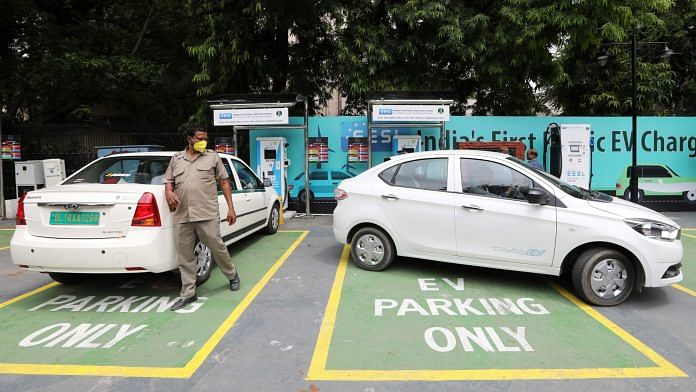There’s no shortage of excitement for electric vehicle battery startups or multibillion-dollar investments in the industry, as companies, backers, and scientists look for the winning play. China, though, is already moving on to the next leg in the race — one that isn’t dependent on a big, bold breakthrough — with sodium-ion batteries. Done right, this technology could lead to widespread adoption in a market largely dependent on subsidies and where EV sales are still a fraction of all cars.
China’s Contemporary Amperex Technology Co., or CATL, the world’s largest battery manufacturer, unveiled its latest product in July — a sodium-ion battery. The following month, China’s Ministry of Industry and Information Technology said it would drive the development, standardization, and commercialization of this type of power-pack, providing a cheaper, faster-charging and safe alternative to the current crop on offer, which continues to be plagued by a host of problems, not least, faulty units catching fire.
Sodium-ion batteries aren’t a new development. They were being researched in the 1970s, but interest was quickly overtaken by a newer, fancier, more promising variety — the lithium-ion battery. Their widespread use meant the sodium-based ones didn’t have many takers and any ongoing development took a back seat.
Now, decades on, the challenges with lithium-ion batteries are becoming apparent. Carmakers and battery manufacturers are focused on bringing down costs — a perennial obstacle. And while lithium-ion batteries have been one of the greatest inventions in power storage, they are increasingly coming up against issues including the cost and availability of materials, and safety. There’s a constant tug-of-war between stable chemistry. so the battery doesn’t combust. and greater energy density. Clear solutions have largely confounded scientists, and what is available isn’t good enough to make lithium-ion scalable and commercially viable for electric vehicles.
The sodium-based batteries aren’t going to take electric cars any further than lithium can. Not anytime soon, at least. However, the materials needed to make them are widely available. The content of sodium in earth reserves is around 2.5% to 3%, or 300 times more than lithium, and is more evenly distributed, according to Jefferies Group LLC analysts. That means it has a major cost advantage: These power packs could cost almost 30% to 50% less than the cheapest electric car battery options currently available. In addition, the price of sodium is less sensitive to market gyrations compared with lithium, increasingly a sentiment gauge for the world’s green ambitions.
And although sodium-ion batteries currently have a relatively lower energy density, they run better at cooler temperatures and have a greater life span, making them a better long-term investment, in theory. CATL’s latest product is expected to have an energy density of 160 Watt-hour per kilogram and will take 15 minutes to reach 80% of its charge. That’s on par with batteries currently on the market, ranging from 140 Wh/kg to 180 and 240 in the highest-end type (that have proven to be combustible at times).
Sodium-ion batteries will effectively need a new supply chain — they can’t rely on the well-established lithium-ion ones. Low material costs, though, mean manufacturing expenses will be reduced, and honing the existing production processes to upgrade these older batteries will be faster. CATL has said it will have a supply chain in place by 2023. Other companies like HiNa Battery Technology Co. already have projects in progress.
Ultimately, the ability to put cheaper and safer options on the market also means widespread accessibility for price-conscious consumers or resource-constrained nations. Countries like India and South Africa are vying to get on the electric car bandwagon with big, ambitious plans to hit global green targets. However, they just don’t have the resources or access to them — neither financial nor raw materials. Options like the sodium-ion battery offer a clear path to go electric and make headway with their climate change goals.
Whoever can master the next-best battery wins.—Bloomberg
Also read: Ola’s new e-scooter factory is women-only, aims to build 10 million two-wheelers by 2022






